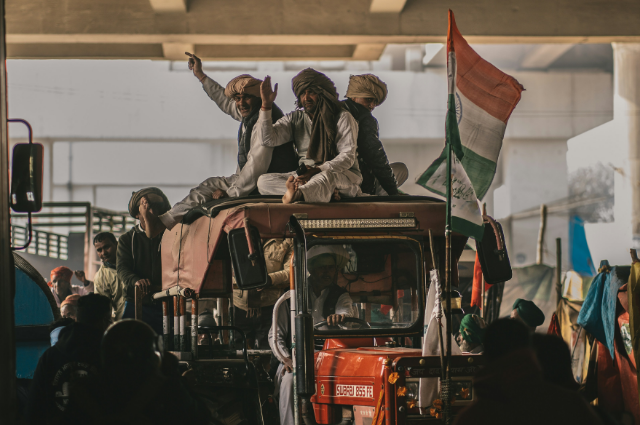
Farmers are the backbone of our nation, their toil sustains us all. - Narendra Modi
THE BEGINNING OF FARMERS' PROTEST
The farmers' protest, known as "Delhi Chalo," commenced on February 13, 2024, marking a significant escalation in the ongoing agrarian unrest in India. At the heart of this agitation lies the demand for the Central government to enact legislation ensuring a minimum support price (MSP) for agricultural produce, a demand that has been central to farmers' grievances for years.
Farmer's Narrative:
From the perspective of the protesting farmers, the call for a guaranteed MSP is rooted in their struggle for economic stability and dignity. Many farmers across India, particularly those engaged in small-scale and subsistence farming, face immense financial hardship due to fluctuating market prices and exploitative practices by middlemen.
The absence of a reliable MSP exacerbates these challenges, leaving farmers vulnerable to market volatility and unable to secure fair returns for their labor and investment.
Moreover, the demand for an MSP is deeply intertwined with broader issues of rural poverty, indebtedness, and agricultural sustainability. For these farmers, securing a guaranteed price floor for their crops is not just about immediate financial relief but also about asserting their right to livelihood and challenging the structural inequalities that plague India's agricultural sector.
Government's Narrative:
On the other hand, the stance of the Central government, led by Prime Minister Narendra Modi, presents a more complex narrative. While the government has acknowledged the importance of addressing farmers' concerns, it has also expressed reservations about implementing a blanket MSP legislation.
Government officials argue that such a move could disrupt market dynamics, hinder private investment in agriculture, and potentially lead to inefficiencies in resource allocation.
Additionally, the government has cited concerns about the fiscal implications of a universal MSP, highlighting the need for a balanced approach that considers both the welfare of farmers and the broader economic interests of the country.
Critics of the MSP policy argue that it could distort price signals, disincentivize crop diversification, and create unsustainable burdens on public finances.
However, despite these reservations, the government has made attempts to engage with farmers and address their grievances through dialogue and policy reforms.
WHAT IS - MINIMUM SUPPORT PRICE?
The Minimum Support Price (MSP) mechanism stands as a pivotal element in India's agricultural landscape, designed to safeguard farmers' interests by ensuring they receive a predetermined price for their produce when sold to the government.
Governed by the Commission for Agricultural Costs and Prices (CACP), the MSP is meticulously calculated, taking into account various factors such as production costs, market demand and supply dynamics, and prevailing market prices. However, the implementation and efficacy of MSP have long been subject to scrutiny, sparking debates and discussions among policymakers, agricultural experts, and stakeholders within the farming community.
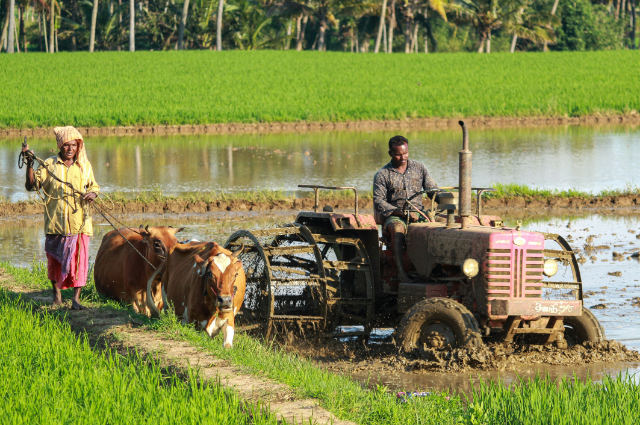
ARGUABLE STAND
On one hand, proponents of MSP argue that it serves as a crucial safety net for farmers, offering them a guaranteed price for their crops irrespective of market fluctuations.
By providing a floor price, MSP instills a sense of financial security among farmers, shielding them from the volatility of agricultural markets and ensuring a minimum level of income.
Additionally, MSP plays a vital role in incentivizing farmers to cultivate crops that are essential for food security and national self-sufficiency, thereby contributing to overall agricultural sustainability and rural development.
Conversely, critics of MSP raise concerns regarding its potential distortions on agricultural markets and government finances. They argue that ;
The MSP system, if not implemented judiciously, can lead to overproduction of certain crops, exacerbating issues of surplus and storage.
Moreover, the fiscal burden of MSP procurement falls on the government, often resulting in budgetary constraints and inefficiencies in resource allocation.
Critics also contend that;
MSP primarily benefits large landholding farmers, neglecting the interests of small and marginalized farmers who may not have access to government procurement mechanisms.
Furthermore, the debate surrounding MSP intersects with broader discussions on agricultural reforms, particularly in the context of recent policy initiatives aimed at liberalizing agricultural markets. While some advocate for reforms to enhance market efficiency and farmer income through avenues such as contract farming and direct market access, others caution against diluting the protective measures provided by MSP, fearing adverse impacts on farmer livelihoods and food security.
DILLI CHALO 2.0
"Dilli Chalo 2.0" marked a significant escalation in the ongoing farmer protests in India. On February 13, 2024, farmers belonging to various groups, notably including the Kisan Mazdoor Morcha and Samyukta Kisan Morcha, embarked on a march towards the capital city, Delhi.
This move was propelled by a steadfast determination to ensure their demands were not just heard, but addressed with urgency.
From the perspective of the protesting farmers,
the march represented a continuation of their struggle for justice and dignity. Their demands, echoing the sentiments of millions of farmers across the country, revolved around the repeal of contentious farm laws, implementation of minimum support prices (MSP), and safeguarding their livelihoods against corporate exploitation.
For these farmers, the journey towards Delhi symbolized not just a physical movement but a collective assertion of their rights and aspirations.
However, from the government's standpoint,
the arrival of farmers at the doorstep of the capital posed complex challenges. While acknowledging the grievances of the farmers, the government had been hesitant to fully concede to their demands, citing concerns about the economic implications of policy reversals and the need for agricultural reform.
This reluctance to yield ground reflected a delicate balancing act between addressing farmer discontent and maintaining a stance of policy continuity and fiscal prudence.
As the farmers marched towards Delhi, tensions simmered on both sides. While the farmers remained resolute in their demands, the government faced mounting pressure to find a viable resolution to the crisis.
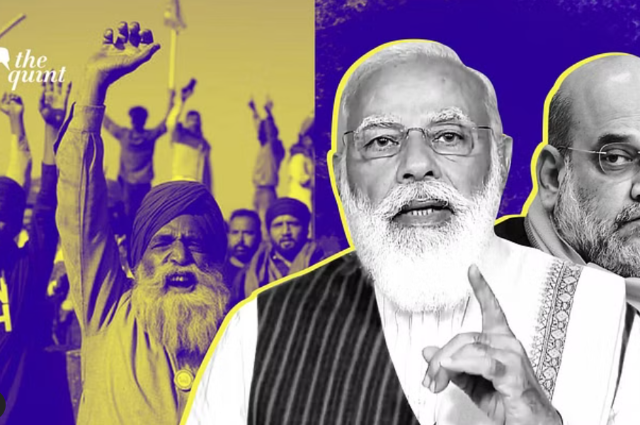
Farmers Protest: How Modi-Shah Underestimated Unions At Every Step- The Quint
The potential for confrontation loomed large, with fears of violence and disruption gripping the nation.
In this volatile environment, the need for dialogue and compromise became increasingly imperative. Both sides were acutely aware of the stakes involved – the livelihoods of millions of farmers hung in the balance, while the government's credibility and legitimacy were put to the test.
THE ORGANISATIONS
The farmer protests in India, particularly the 'Delhi Chalo' march, are being spearheaded by two main organizations: the Samyukta Kisan Morcha and the Kisan Mazdoor Morcha.
These groups have garnered significant support, with the former comprising farmers from over 150 organizations and the latter backed by an additional 100 unions. At the forefront of these protests are notable leaders such as;
Jagjit Singh Dallewal from BKU (Dallewal) and Sarvan Singh Pandher from the Kisan Mazdoor Morcha.
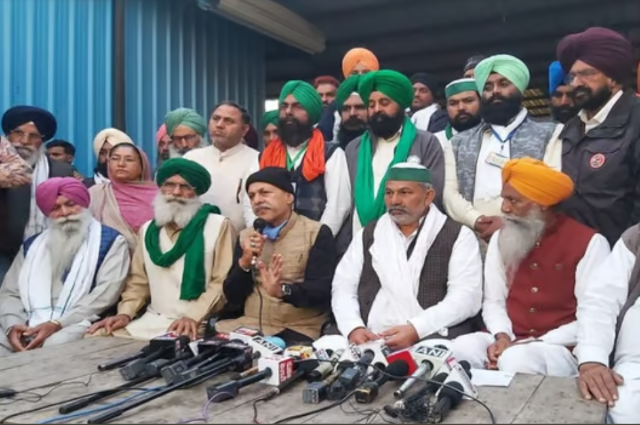
From an analytical perspective, it's crucial to examine the motivations and objectives of these organizations and their leaders, as well as the responses they elicit from both the government and the wider public.
On one hand, the Samyukta Kisan Morcha and the Kisan Mazdoor Morcha represent the collective grievances of farmers who feel marginalized by existing agricultural policies and practices. These organizations have articulated demands such as the repeal of contentious farm laws, the assurance of minimum support prices for crops, and the resolution of issues related to agricultural debt and land rights.
Their mobilization reflects deep-seated frustrations over the perceived neglect of agricultural communities and the widening gap between rural and urban prosperity.
Jagjit Singh Dallewal and Sarvan Singh Pandher, as prominent leaders within these organizations, play pivotal roles in galvanizing support and articulating the concerns of the farming community. Their leadership qualities, organizational skills, and ability to mobilize large-scale protests have been instrumental in sustaining the momentum of the movement.
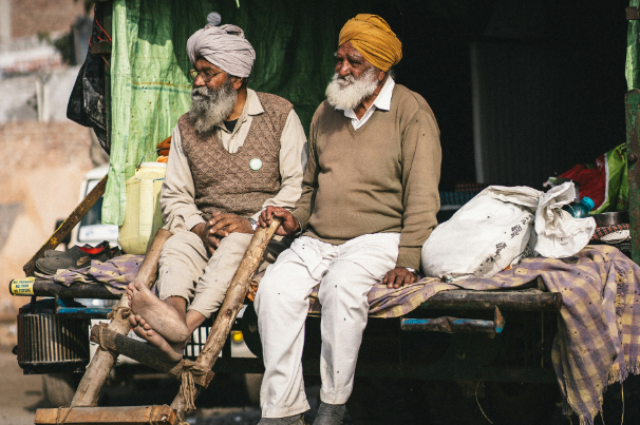
On the other hand, The government's stance reflects its commitment to market-oriented agricultural reforms aimed at modernizing the sector and boosting productivity, but it also underscores the challenges of balancing economic imperatives with social justice and inclusivity.
Where does the common public stand?
In the broader public discourse, the farmer protests have sparked debates over the future of agriculture in India, the role of government intervention versus market forces, and the nature of democratic dissent in a rapidly changing society.
While some segments of the population sympathize with the farmers' plight and support their demands for justice and equity, others are wary of the disruptions caused by prolonged protests and advocate for a swift resolution to restore normalcy and stability.
COLLATERAL DAMAGE
The loss of lives during the farmer protests at the Shambhu and Khanauri borders, along with the casualties among police officers during the 'Delhi Chalo' protest march in Ambala, highlights the grim reality of the ongoing tensions between farmers and authorities in India. Such collateral damage not only underscores the intensity of the protests but also raises critical questions about the handling of dissent and the need for peaceful resolution.
FARMERS LIVES AT RISK:
On one side of the spectrum, the deaths of at least five farmers, three of whom reportedly succumbed to heart attacks according to official records from Patiala's Rajindra Hospital, underscore the physical and emotional toll that prolonged demonstrations can exact.
These fatalities shed light on the challenging conditions faced by farmers as they continue to demand redressal for their grievances, including the repeal of contentious farm laws and assurances of fair prices for their produce.
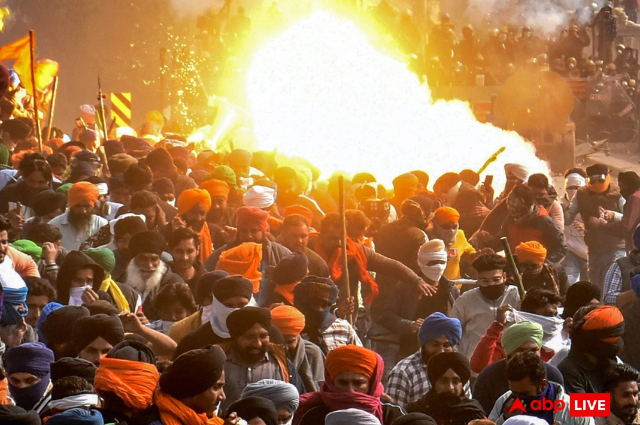
AUTHORITY AT RISK:
Conversely, the casualties among Haryana Police, including the deaths of two officers and injuries to over 30 others during clashes in Ambala, highlight the complexities of maintaining law and order in the face of mass mobilizations.
While law enforcement agencies are tasked with upholding public safety and order, the use of force in response to protests can sometimes escalate tensions and result in unintended consequences. The loss of lives among police personnel underscores the inherent risks associated with managing large-scale demonstrations and the need for strategies that prioritize de-escalation and dialogue over confrontation.
VIOLENCE CONTINUED:
ABIDERS VS MAKERS
The recent escalation in the farmer protests in India, characterized by clashes with security forces, deployment of tear gas and water cannons, and the tragic loss of lives, underscores the deep-rooted grievances and tensions surrounding this contentious issue.
As thousands of farmers, accompanied by their tractors, attempted to converge on the capital city, they were met with barricades erected by the police, turning what was meant to be a peaceful protest into a scene of confrontation and chaos.
The presence of cement boulders, barbed wire, and metal blocks as barricades symbolizes not just physical barriers but also the entrenched resistance they face in their fight for their rights.
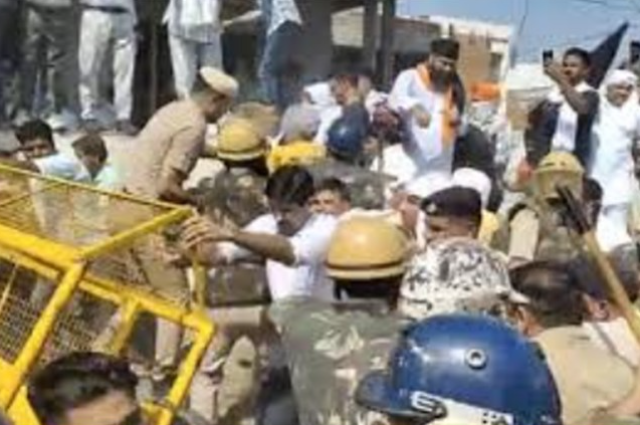
Tragically, the protests have claimed lives, further intensifying the sense of urgency and anger among the farming community. The deaths of Subhkaran Singh, Darshan Singh, Gyan Singh, Manjeet Singh, and Narendra Pal Singh serve as grim reminders of the human cost of this struggle.
Subhkaran Singh's death in a clash at Khanauri border and Darshan Singh's demise due to a cardiac arrest amid the protests highlight the risks and pressures faced by those participating in the movement.
On the other side of the divide are the authorities tasked with maintaining law and order, who argue that the enforcement of Section 144 and the use of tear gas and water cannons were necessary measures to prevent further escalation of tensions and ensure public safety.
From their perspective, the protests pose a logistical and security challenge, necessitating a firm response to uphold the rule of law and safeguard public infrastructure.
However, the heavy-handed tactics employed by the police risk exacerbating rather than resolving the underlying grievances of the farmers. The use of force not only undermines the democratic right to peaceful protest but also deepens the sense of alienation and mistrust between the farmers and the government.
Moreover, the tragic loss of lives serves as a stark indictment of the failure to address the root causes of the protests through meaningful dialogue and negotiation.
CHANCE AT PEACE?
In this latest meeting, the government tabled a proposal to procure five key crops at Minimum Support Prices (MSP) for a duration of five years. However, this proposition was met with refusal by the farmers, further entrenching the impasse.
What does the government analyzed?
From the government's perspective, the offer to guarantee MSP for five crops over a five-year period could be viewed as a significant concession aimed at addressing the concerns of farmers regarding the pricing and procurement of their produce.
It reflects an acknowledgment of the importance of ensuring stable incomes for farmers and mitigating the risks associated with market fluctuations.
Additionally, the government's willingness to engage in negotiations and put forward concrete proposals demonstrates a commitment to finding a resolution to the protracted standoff.
What the Farmers analyzed?
On the other hand, the farmers' rejection of the government's offer signifies their deep-seated skepticism and dissatisfaction with the proposed solutions. Despite the apparent concessions, many farmers perceive the government's stance as insufficient to address the fundamental issues at the heart of the protests.
There are concerns regarding the limited scope of the MSP assurance, with demands for its extension to cover a wider range of crops.
Moreover, there remains skepticism regarding the government's sincerity in implementing and sustaining such measures over the long term, given past instances of policy reversals and inadequate enforcement.
THE BATTLE CONTINUES:
FOR BOTH THE FARMERS AND THE LAW MAKERS!
The failure to reach a consensus highlights the complexity of the underlying issues and the entrenched positions of both parties. While the government's offer may be perceived as a step in the right direction, its inability to garner acceptance underscores the need for more comprehensive and inclusive solutions.
The farmers, emboldened by widespread support and a sense of collective purpose, are unlikely to settle for piecemeal measures that fall short of addressing their broader demands for agricultural reform and economic security.

Furthermore, the refusal to accept the government's proposal prolongs the uncertainty and instability surrounding the protests, with ramifications for both agricultural productivity and political stability.
The persistence of the impasse underscores the imperative for genuine dialogue and compromise, grounded in a shared commitment to the welfare of farmers and the sustainability of India's agricultural sector.
HOW MANY ROUNDS TO ATTAIN A COMMON GROUND?
. . .
References:
- https://timesofindia.indiatimes.com
- https://www.business-standard.com
- https://www.thehindu.com
- https://apnews.com
- https://www.hindustantimes.com
- https://m.economictimes.com
- https://indianexpress.com
